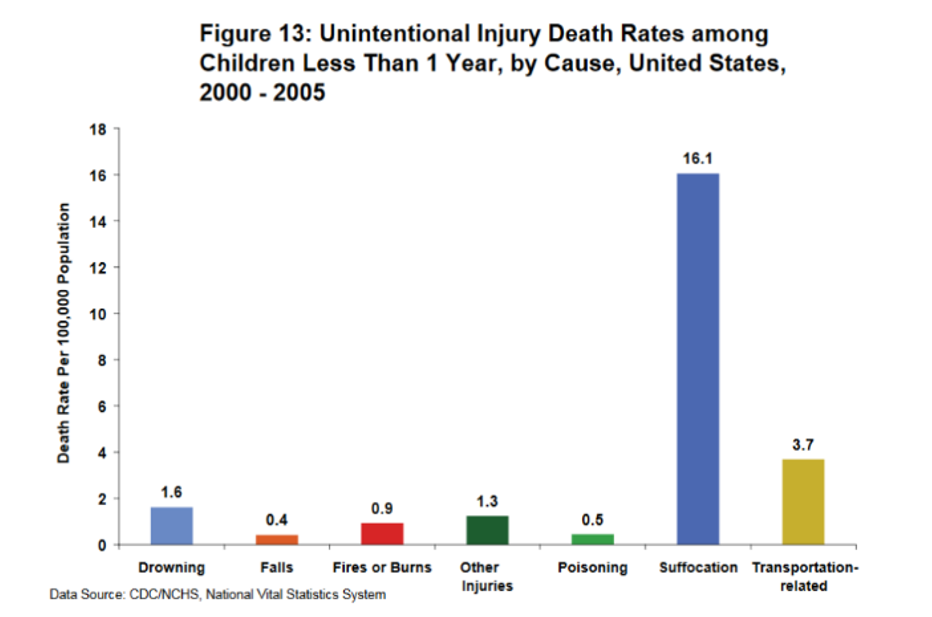Keeping our youngest patients/children safe can be especially challenging as healthy development requires opportunity to explore their environment and learn. However, most injuries are preventable. The following information and resources are organized by the leading causes of unintentional injury death among infants through age 8.
“Injuries are among the most under-recognized public health problems facing the United States today. About 20 children die every day from a preventable injury – more than die from all diseases combined. Injuries requiring medical attention or resulting in restricted activity affect approximately 20 million children and adolescents and cost $17 billion annually in medical costs”. – CDC Injury Report
Suffocation and Sleep Related Deaths
Sudden Unexpected Infant Death (SUID), which includes Sudden Infant Death Syndrome (SIDS), is the leading cause of injury death in infancy. Sleep is a big challenge for families with babies but following safe sleep recommendations can prevent many SUID fatalities. Help the families in your practice learn how their babies can sleep safely so parents can sleep soundly.
Visit the Safe Sleep Patient Care page for more information including resources for families and the Bright Futures Tool and Resource Kit.

Talking with Families
We know that new parents are trying to keep their heads above water – they’re sleep deprived and inundated with messages about the “right way” to care for their babies. It can be challenging for parents to follow the AAP safe sleep recommendations every sleep.
The American Academy of Pediatrics has created family material and messages for our safe sleep partners and pediatricians. We knew the way to make useful items that resonate would be to talk to parents themselves. The following is what we learned from research with parents and grandparents around safe sleep messaging. Read more on what we learned from families.
Please consider these strategies when crafting your own messages or when sharing material from this toolkit:
- Focus on sleeping soundly (emphasis on sleeping deeper because you know your baby is safe) versus sleeping better (emphasis on getting unbroken sleep).
- Emphasize that baby will choose how he wants to sleep once he starts turning himself over — until then, stick with what’s safest.
- Instead of addressing all possible scenarios, focus on this simple message: babies sleep safest on their backs.
- Use empathy.
- For the at-risk African American and American Indian populations, call out the higher risk of SIDS and make messages feel like they are coming from the community.
Patient Education
Last Updated
01/04/2022
Source
American Academy of Pediatrics